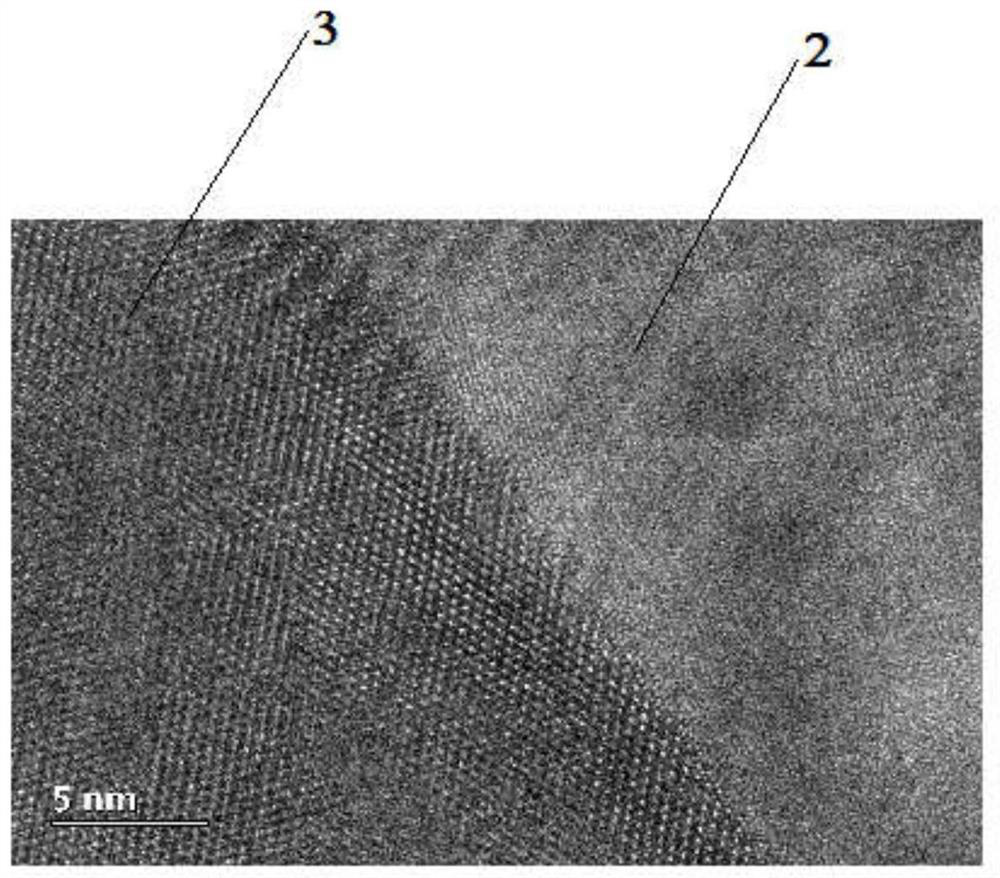Nickel-titanium shape memory alloy micro-wire surface machining process
A memory alloy and surface processing technology, applied in metal processing equipment, metal material coating technology, metal wire drawing, etc., can solve problems such as difficult to accurately control penetration thickness, functional attenuation of shape memory alloy microwires, etc., and achieve clear technical methods Simple, easy to promote, simple and controllable effect
- Summary
- Abstract
- Description
- Claims
- Application Information
AI Technical Summary
Problems solved by technology
Method used
Image
Examples
Embodiment 1
[0037] The nickel-titanium shape-memory alloy microwire 3 with a diameter of 25 μm was selected. The actual diameter of the nickel-titanium shape-memory alloy microwire was measured by scanning electron microscope to be 25.07 μm, and the initial grain size was 80 nm, which was recorded as the first microwire; a diamond wire drawing die was selected 3 groups, the outlet apertures are 24.5μm, 24μm and 23.5μm respectively, and the cone angle is 25°. Oil lubricating fluid is used for spray cooling drawing. After 3 consecutive passes of drawing, the second microfilament is obtained. Microstructural characterization of the second microfilament, as figure 1 As shown, it is determined that there is an amorphous layer 1 with a thickness of about 60nm on the surface of the second microwire; then the second microwire is plasma nitrided in a tube furnace, the nitriding temperature is 350°C, and the time is 2 minutes. During the nitriding process, The tension at both ends of the second mic...
Embodiment 2
[0039] The nickel-titanium shape memory alloy microwire 3 with a diameter of 50 μm was selected. The actual diameter of the nickel-titanium shape memory alloy microwire was measured by scanning electron microscope to be 50.10 μm, and the initial grain size was 100 nm, which was recorded as the first microwire; a diamond wire drawing die was selected Group 2, the outlet apertures were 48.5 μm and 47.5 μm, and the cone angles were both 24°. Oily lubricating fluid was used for spray cooling and drawing. After two consecutive drawing passes, the second microfilament was obtained. The microstructure of the second microwire was characterized, and it was determined that there was an amorphous layer 1 with a thickness of about 160 nm on the surface of the second microwire; then, the second microwire was plasma nitriding in a tube furnace, the nitriding temperature was 450°C, and the time was 3 minutes. During the nitriding process, the tension at both ends of the second microfilament w...
Embodiment 3
[0041] The nickel-titanium shape-memory alloy microwire 3 with a diameter of 30 μm was selected. The actual diameter of the nickel-titanium shape-memory alloy microwire was measured by scanning electron microscope to be 30.15 μm, and the initial grain size was 65 nm, which was recorded as the first microwire; a diamond wire drawing die was selected 3 groups, the outlet apertures are 29.4μm, 28.8μm and 28.2μm, and the cone angle is 28°. Oil lubricating fluid is used for spray cooling drawing. After 3 consecutive passes of drawing, the second microfilament is obtained , perform microstructural characterization on the second microwire, and confirm that there is an amorphous layer 1 with a thickness of about 120 nm on the surface of the second microwire; 2min, during the nitriding process, the tension at both ends of the second microwire was maintained at 220MPa, and the third microwire was obtained, and the surface XPS analysis and micro-area XRD analysis were carried out on the t...
PUM
| Property | Measurement | Unit |
|---|---|---|
| thickness | aaaaa | aaaaa |
| thickness | aaaaa | aaaaa |
| thickness | aaaaa | aaaaa |
Abstract
Description
Claims
Application Information
 Login to View More
Login to View More - R&D
- Intellectual Property
- Life Sciences
- Materials
- Tech Scout
- Unparalleled Data Quality
- Higher Quality Content
- 60% Fewer Hallucinations
Browse by: Latest US Patents, China's latest patents, Technical Efficacy Thesaurus, Application Domain, Technology Topic, Popular Technical Reports.
© 2025 PatSnap. All rights reserved.Legal|Privacy policy|Modern Slavery Act Transparency Statement|Sitemap|About US| Contact US: help@patsnap.com



